AHMM reveals its refurbishment of New Scotland Yard
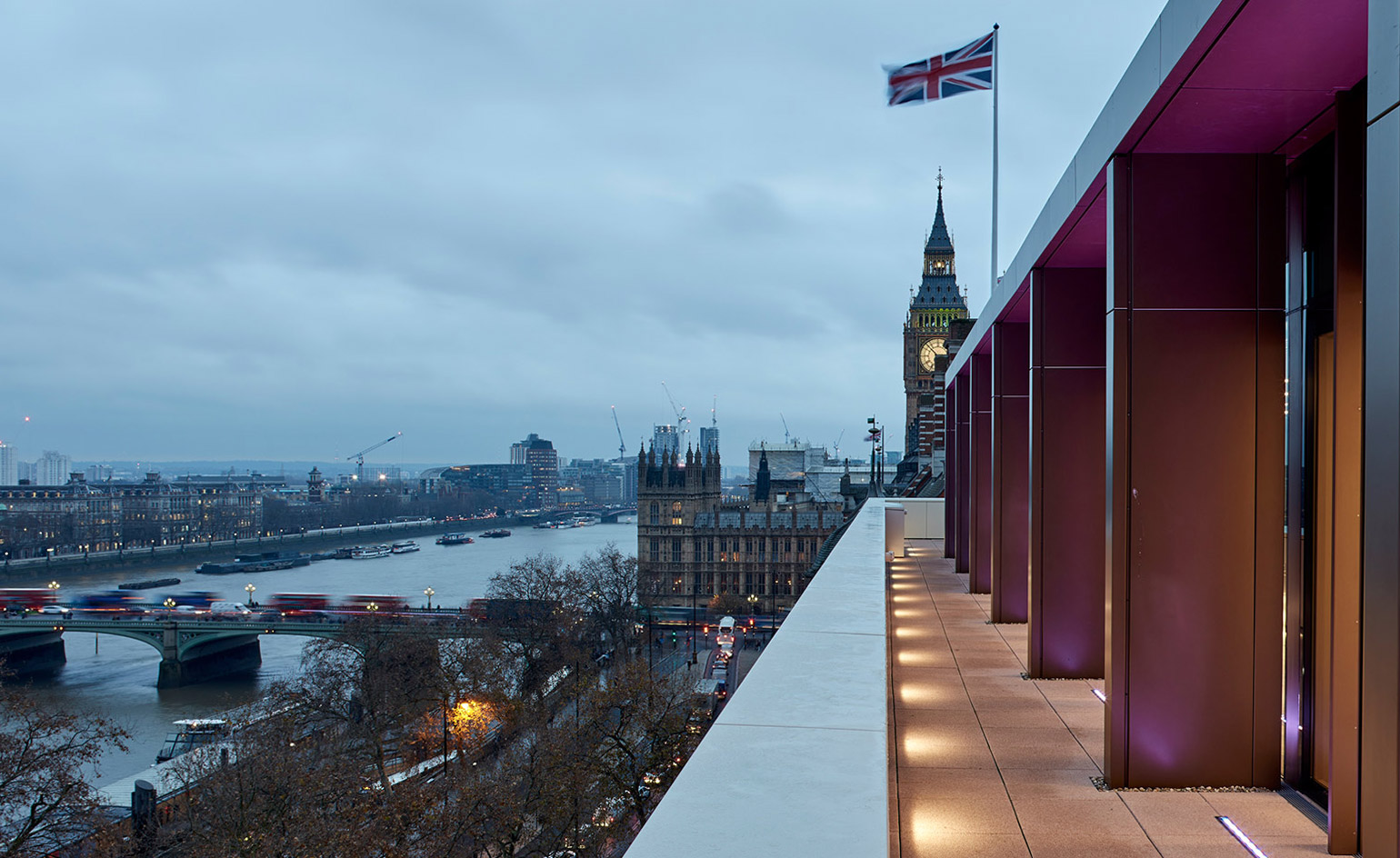
London’s police force is moving back into its old 1930s home, originally designed by William Curtis Green, architect of the capital’s Dorchester hotel. The neo-classical building in Portland stone has been remodelled and extended by AHMM, whose brief was to make it simultaneously welcoming to the public and highly secure. The 188-year-old building on London’s Victoria Embankment is called New Scotland Yard, meaning the Metropolitan Police staff have brought the name – and famous revolving triangular sign – with them from their former 1960s tower block HQ by Chapman Taylor and Max Gordon.
As part of the refurbishment, AHMM has replaced the front door on the corner with a wide, centred front entrance that opens onto a lozenge-shaped reception area the width of the Curtis Green building, with a reception desk in untreated steel. There’s also an extra floor on the roof, and two extensions on the rear to restore symmetry of the original structure, increasing the floorspace from 8,700 sq m to 12,000 sq m.
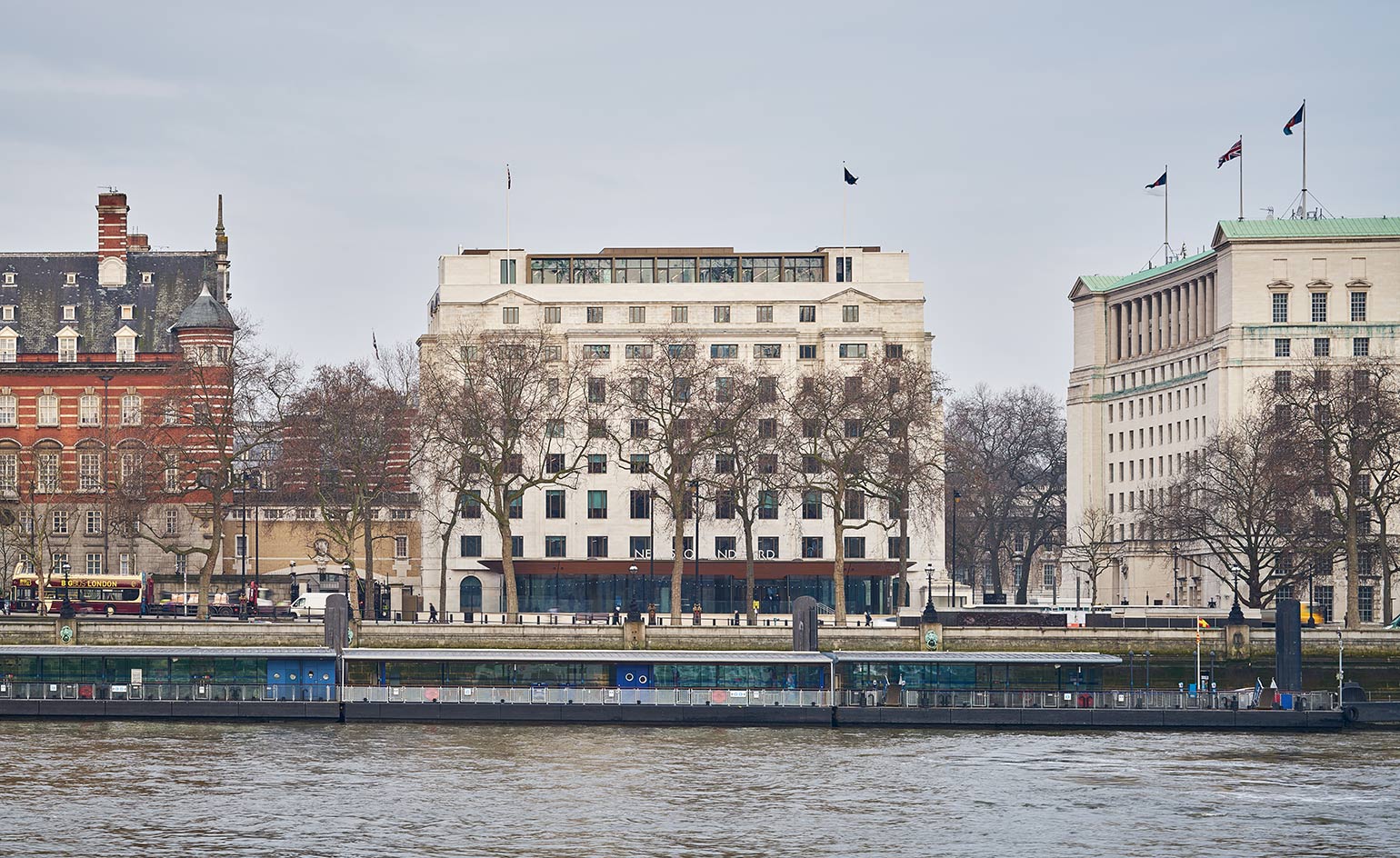
The exterior view of the building, which overlooks the River Thames. Photography: Timothy Soar
On the back of the building, which faces Downing Street, is a brise soleil feature wall of coloured batons to diffuse daylight and ‘act as veil’ between New Scotland Yard and its neighbouring building, says AHMM director Paul Monaghan. Meanwhile, the sign’s lettering – in the 1967 Flaxman typeface by Edward Wright – has been cleaned up and backlit.
Inside includes two off-limits floors focusing on counter-terrorism, and the press department, as well as rooms for meetings and seminars. Unlike the previous offices, it is all openplan and features ‘agile working’, meaning non-allocated desks. And while much of AHMM’s interior features are standard fare (grey patterned carpet, black task chairs), they’ve had fun in the toilets. Each facility has its own colour scheme, taken from the Met’s patrol car livery from days gone by. ‘It gives people a spring in their step when they go in there,’ says Monaghan.
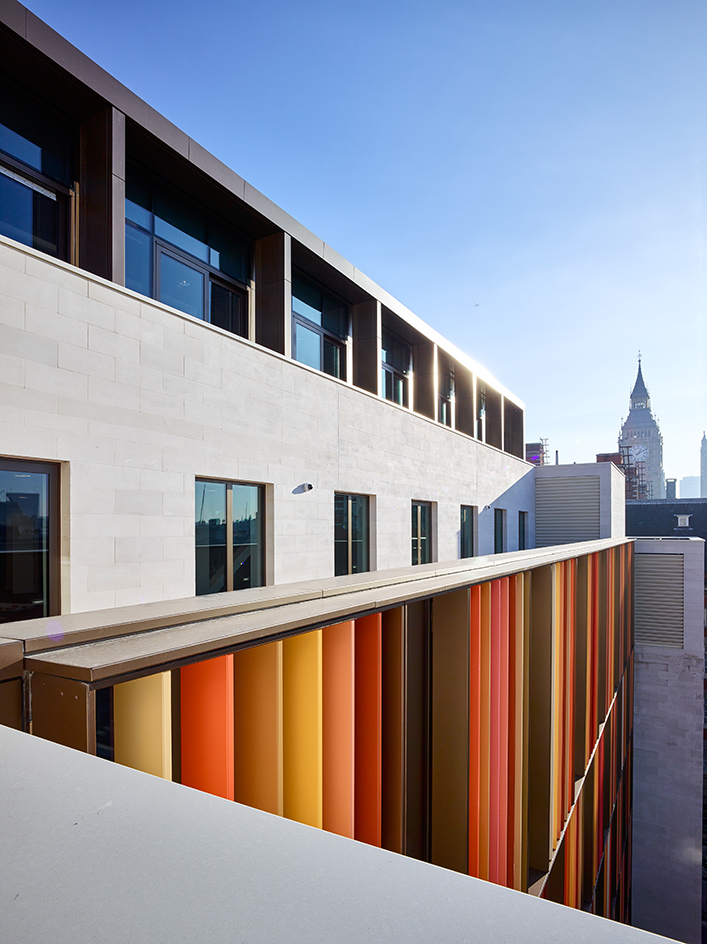
A new upper floor has been added to the neo-classical building. Photography: Timothy Soar
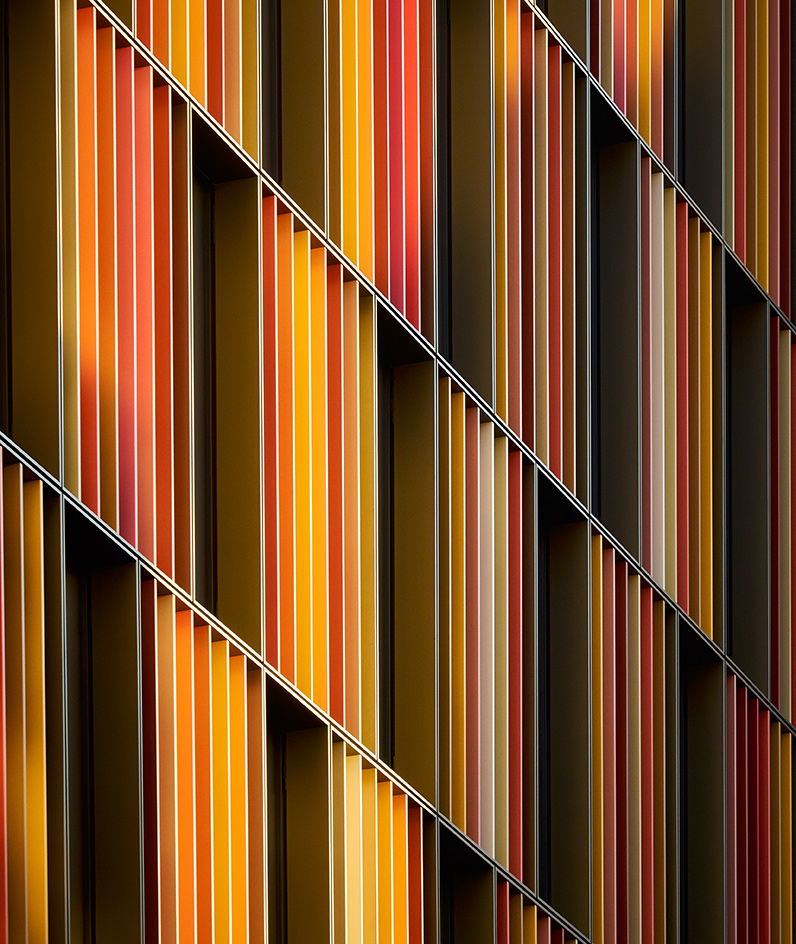
At the back, a brise soleil feature wall of coloured batons diffuses daylight into the building. Photography: Timothy Soar
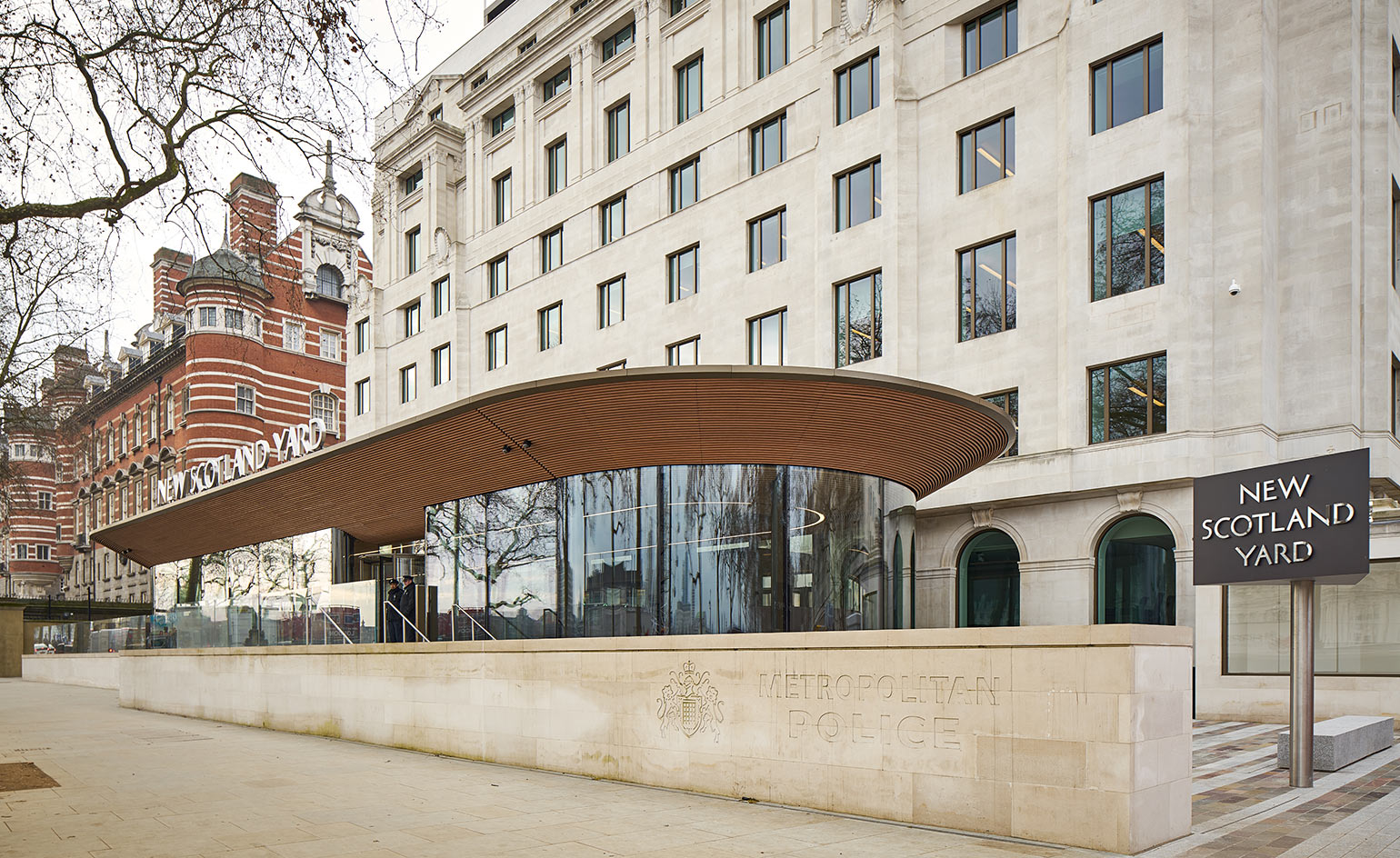
AHMM have replaced the front door on the corner with a wide, centred front entrance that opens onto a lozenge-shaped reception area. Photography: Timothy Soar
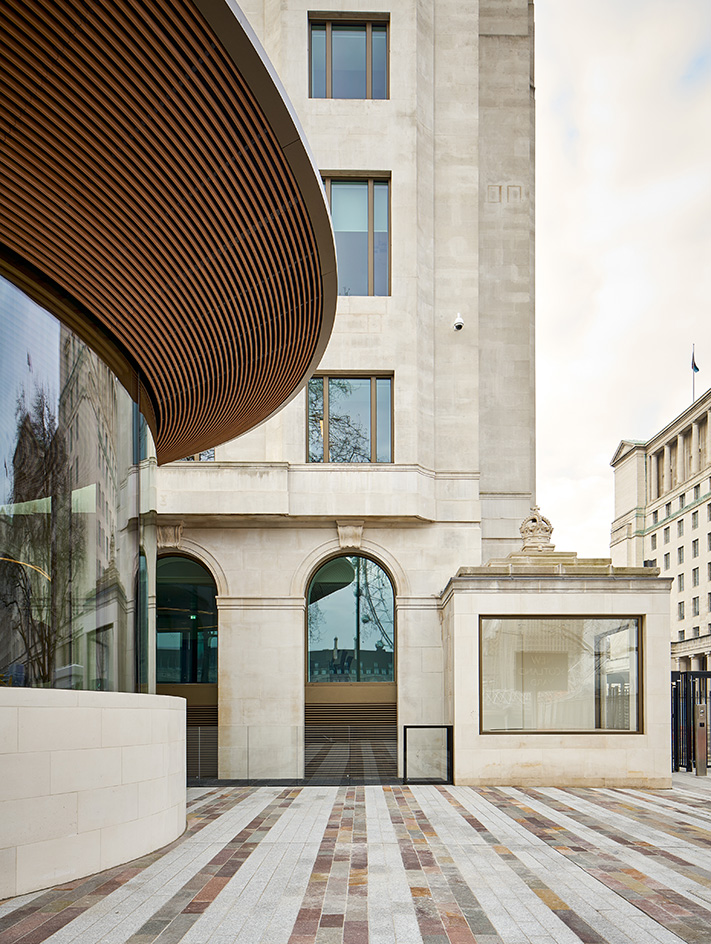
The entrance is welcoming yet secure. Photography: Timothy Soar
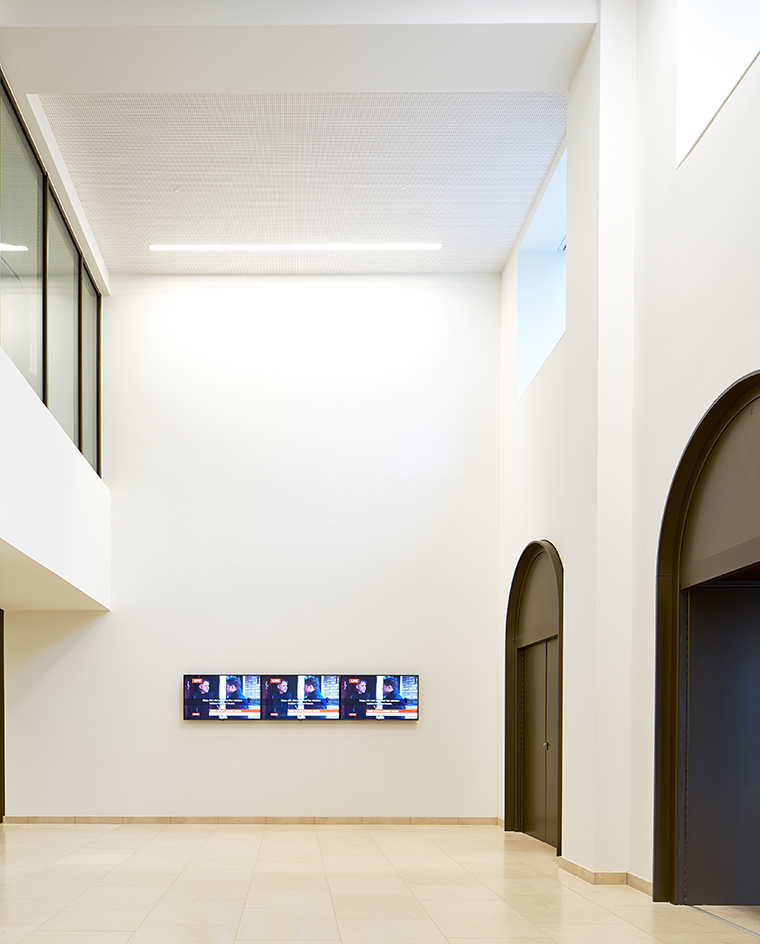
Inside, there is an untreated steel reception desk. Photography: Timothy Soar
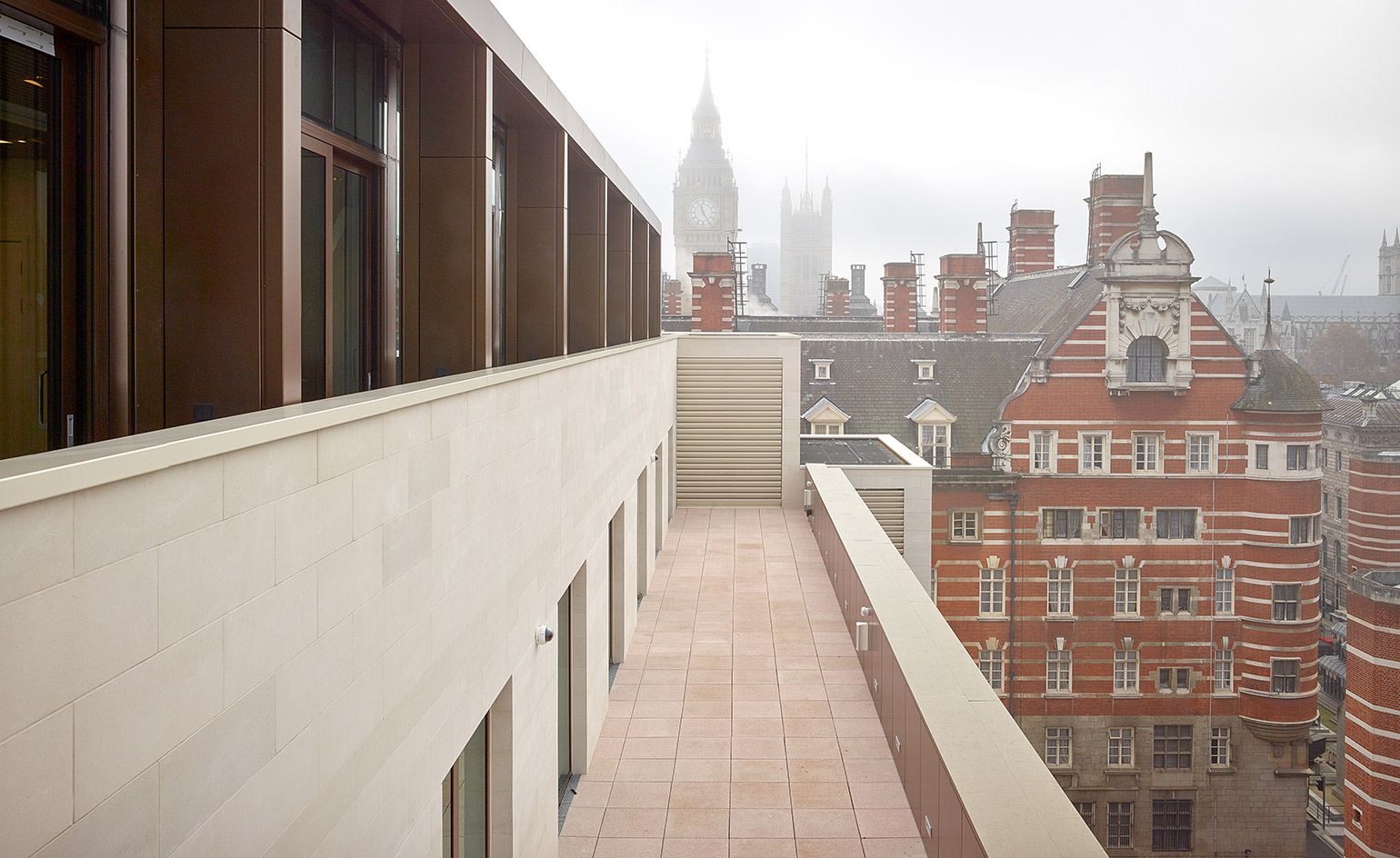
The view from the roof of the building towards Westminster. Photography: Timothy Soar
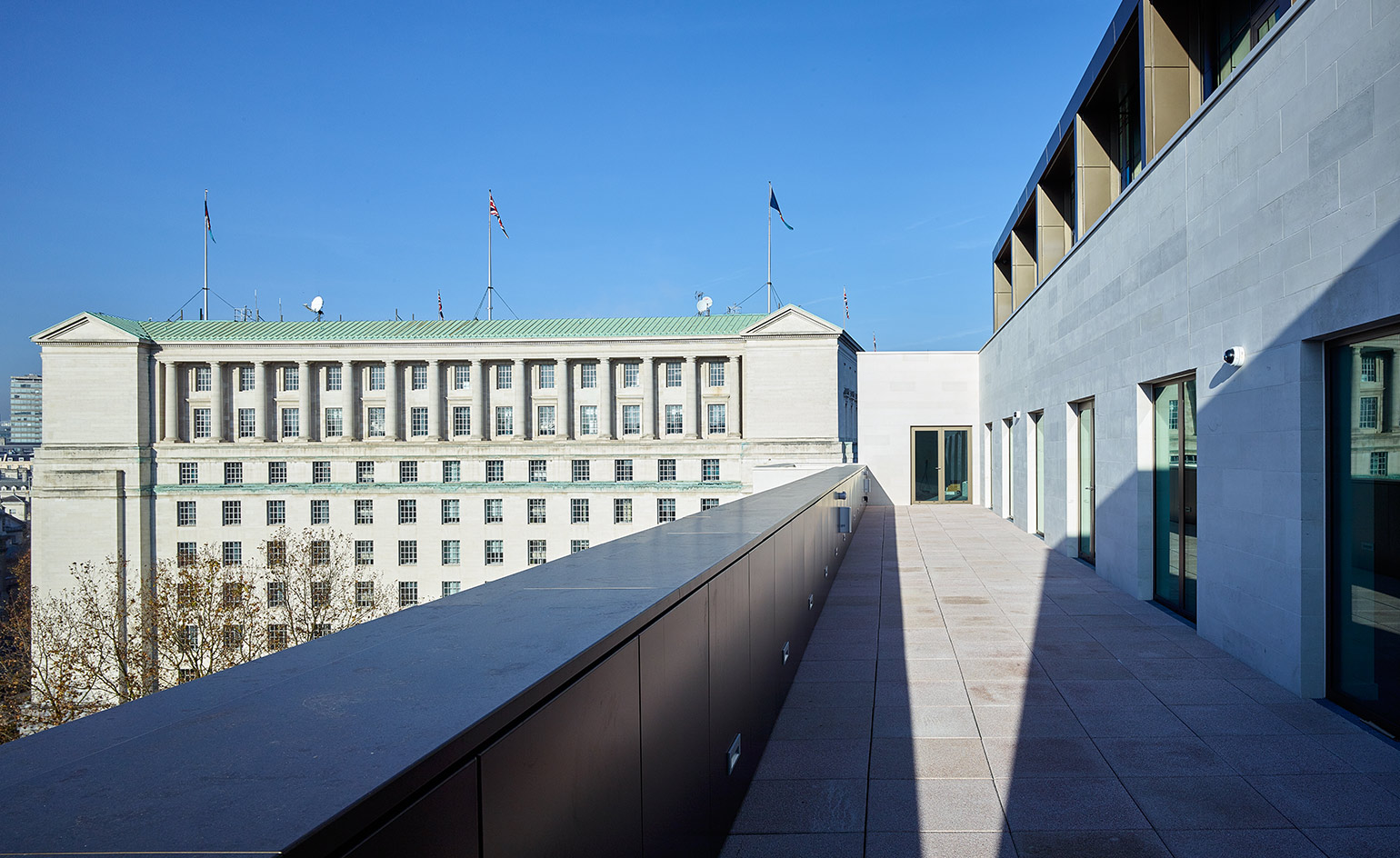
William Curtis Green was also the architect of London's Dorchester hotel. Photography: Timothy Soar
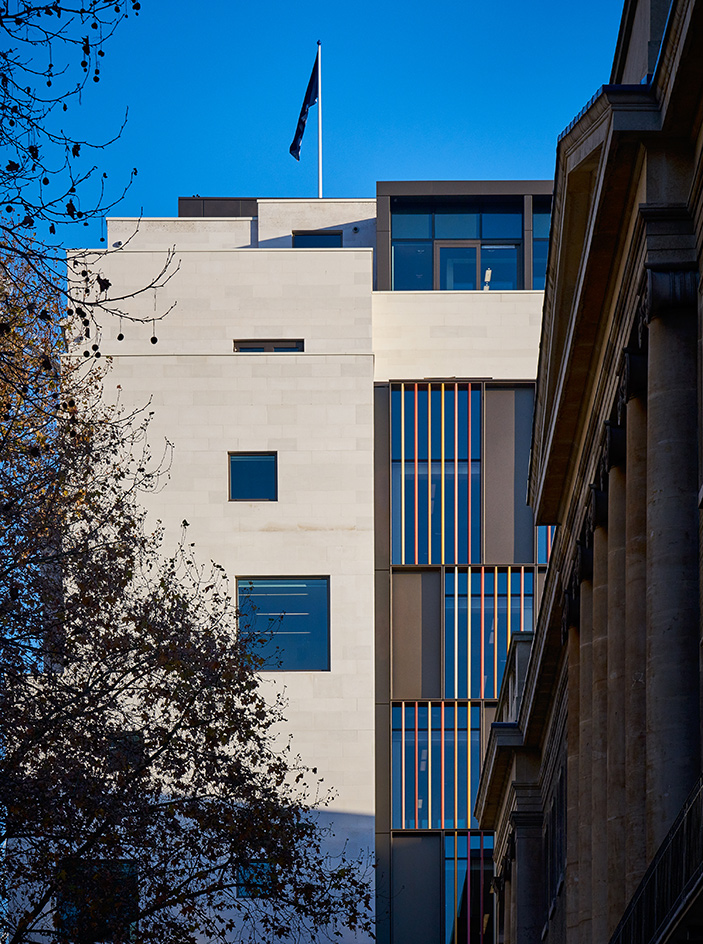
The floorspace has increased from from 8,700 sq m to 12,000 sq m with the new extension
INFORMATION
For more information, visit the AHMM website
Receive our daily digest of inspiration, escapism and design stories from around the world direct to your inbox.
Clare Dowdy is a London-based freelance design and architecture journalist who has written for titles including Wallpaper*, BBC, Monocle and the Financial Times. She’s the author of ‘Made In London: From Workshops to Factories’ and co-author of ‘Made in Ibiza: A Journey into the Creative Heart of the White Island’.
-
 A day in Ahmedabad – tour the Indian city’s captivating architecture
A day in Ahmedabad – tour the Indian city’s captivating architectureIndia’s Ahmedabad has a thriving architecture scene and a rich legacy; architect, writer and photographer Nipun Prabhakar shares his tips for the perfect tour
-
 You can now stay in one of Geoffrey Bawa’s most iconic urban designs
You can now stay in one of Geoffrey Bawa’s most iconic urban designsOnly true Bawa fans know about this intimate building, and it’s just opened as Colombo’s latest boutique hotel
-
 Pentagram’s identity for eVTOL brand Vertical Aerospace gives its future added lift
Pentagram’s identity for eVTOL brand Vertical Aerospace gives its future added liftAs Vertical Aerospace reveals Valo, a new air taxi for a faster, zero-emission future, the brand has turned to Pentagram to help shape its image for future customers
-
 Arbour House is a north London home that lies low but punches high
Arbour House is a north London home that lies low but punches highArbour House by Andrei Saltykov is a low-lying Crouch End home with a striking roof structure that sets it apart
-
 A former agricultural building is transformed into a minimal rural home by Bindloss Dawes
A former agricultural building is transformed into a minimal rural home by Bindloss DawesZero-carbon design meets adaptive re-use in the Tractor Shed, a stripped-back house in a country village by Somerset architects Bindloss Dawes
-
 RIBA House of the Year 2025 is a ‘rare mixture of sensitivity and boldness’
RIBA House of the Year 2025 is a ‘rare mixture of sensitivity and boldness’Topping the list of seven shortlisted homes, Izat Arundell’s Hebridean self-build – named Caochan na Creige – is announced as the RIBA House of the Year 2025
-
 In addition to brutalist buildings, Alison Smithson designed some of the most creative Christmas cards we've seen
In addition to brutalist buildings, Alison Smithson designed some of the most creative Christmas cards we've seenThe architect’s collection of season’s greetings is on show at the Roca London Gallery, just in time for the holidays
-
 In South Wales, a remote coastal farmhouse flaunts its modern revamp, primed for hosting
In South Wales, a remote coastal farmhouse flaunts its modern revamp, primed for hostingA farmhouse perched on the Gower Peninsula, Delfyd Farm reveals its ground-floor refresh by architecture studio Rural Office, which created a cosy home with breathtaking views
-
 A revived public space in Aberdeen is named Scotland’s building of the year
A revived public space in Aberdeen is named Scotland’s building of the yearAberdeen's Union Terrace Gardens by Stallan-Brand Architecture + Design and LDA Design wins the 2025 Andrew Doolan Best Building in Scotland Award
-
 The Architecture Edit: Wallpaper’s houses of the month
The Architecture Edit: Wallpaper’s houses of the monthFrom wineries-turned-music studios to fire-resistant holiday homes, these are the properties that have most impressed the Wallpaper* editors this month
-
 A refreshed 1950s apartment in East London allows for moments of discovery
A refreshed 1950s apartment in East London allows for moments of discoveryWith this 1950s apartment redesign, London-based architects Studio Naama wanted to create a residence which reflects the fun and individual nature of the clients